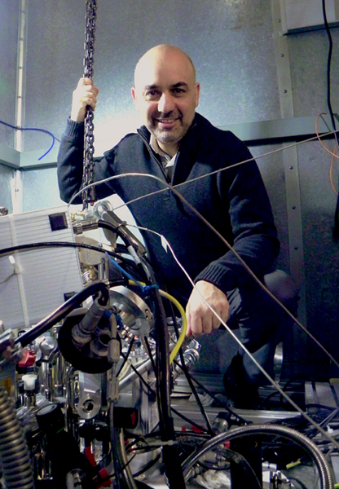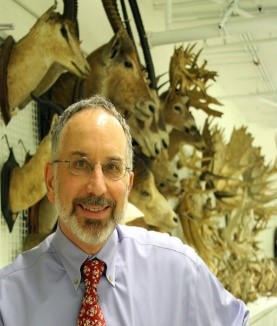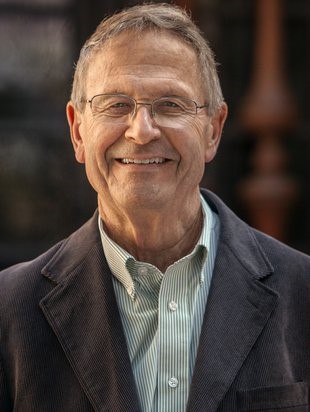-
- 조기유학
- 보딩스쿨
- 대학유학
- 미술유학
- 석사/박사유학
- 어학연수
- 유학서비스
- 회사소개
- 개인보호정책
- 마이페이지
- 비자서비스

대학유학 전공정보
Dream and Do it! 여러분의 미래를 함께 준비하겠습니다.
Physics / Biology / Chemistry
전공 & 이수 과정
미국 물리학과(PHYSICS)
물리학은 다양한 이론과 복잡한 수학 그리고 실험을 진행하며 물리학과 관련 기본 원리와 함께 전문화된 커리큘럼 과정을 배우게 됩니다. 주요 학문으로 전기와 자기, 공간과 시간, 열역학, 양자 물리학, 상대성 이론, 지구 물리학, 유체 역학, 천문학, 지질학 등이 있습니다.
학기초에는 고전과 현대 물리학의 기초와 많은 수학 공식에 학습의 초점이 맞춰집니다. 이후부터 양자 및 상대성 이론을 배우며 학위 후반부에는 물리학의 전문성을 가진 특정 분야를 선택할 수 있는 기회를 갖게 될 것입니다. 마지막 학년엔, 독자적으로 또는 그룹 연구 프로젝트를 완료하는 임무를 맡게 될 것입니다.
미국 생물학과(BIOLOGY)
생물학과는 생물에 대한 기초 지식과 이론을 체계적으로 이해하고 자연 생태계와 생명 현상을 탐구하며 생화학, 미생물학, 진화생물학 등 생물 과학의 다양한 연구 분야가 존재합니다. 생물학 연구를 선택한 사람들은 세포 이론, 진화, 유전학, 에너지, 항상성에 대한 지식을 넓힐 수 있을 수 있습니다. 대부분의 대학은 생물학 학위 프로그램을 제공하고 생물학을 전공하는 학생들은 다른 과학이나 사회과학과의 공동 학위 프로그램도 많이 이수합니다.
일부 대학들은 동물학이나 생태학 같은 생물과학 분야에서 더 전문적인 학위를 제공합니다. 생물학을 전공한 학생들은 의학계열로 옮겨갈 수 있는 좋은 기초를 갖게 되며, 많은 학생들은 연구 실험실, 즉 제약과 생명공학기업으로 취직을 하게 됩니다.
미국 화학과(CHEMISTRY)
화학은 현대 시대의 최첨단 과학적 발견과 새로운 생산물 과정의 근원입니다. 화학을 이수하면 고체 화학, 분자의 모양&특성 및 반응, 유기화학과 생물화학, 물리 과학, 분자 약리학, 무기화학 등을 배우게 됩니다.
졸업생들은 화학, 제조, 제약 산업과 포렌식, 환경 분야에서 일하게 되지만 이 분야에 한정하지 않고 법률과 금융 같은 분야에서도 활약하게 됩니다.
Sample 4-Year Curriculum
4년 과정 예시
PHYSICS –UC Santa Barbara
1학년
(Freshman Year)
| Fall | Winter | Spring |
|---|---|---|
Introduction to Mathematical Methods for Physics |
General Physics I |
General Physics II |
Introduction to Computer Programming for the Physical Sciences |
Calculus with Algebra and Trigonometry II |
Linear Algebra with Applications |
Calculus with Algebra and Trigonometry I |
Science Elective |
Science Elective |
General Education (GE) |
General Education (GE) |
General Education (GE) |
2학년
(Sophomore Year)
| Fall | Winter | Spring |
|---|---|---|
Experimental Physics I |
Experimental Physics II |
Experimental Physics III |
General Physics III |
General Physics IV |
General Physics V |
Vector Calculus with Applications, First Course |
Differential Equations |
Vector calculus with Applications, Second Course |
General Education (GE) |
General Education (GE) |
General Education (GE) |
3학년
(Junior Year)
| Fall | Winter | Spring |
|---|---|---|
Intermediate Mechanics and Special Relativity |
Complex Variables and Fourier Transforms |
Quantum Mechanics III |
Quantum Mechanics I |
Advanced Mechanics |
Physics Elective |
Analog Electronics |
Quantum Mechanics II |
Physics Elective |
General Education (GE) |
4학년
(Senior Year)
| Fall | Winter | Spring |
|---|---|---|
Electromagnetism I |
Electromagnetism II |
Physics Lab Elective |
Thermal and Statistical Physics I |
Thermal and Statistical Physics II |
Physics Elective |
Advanced Experimental Physics |
Physics Elective |
BIOLOGY - UCLA
1학년
(Freshman Year)
| Fall | Winter | Spring |
|---|---|---|
Mathematics for Life Sciences I |
Mathematics for Life Sciences II |
Introduction to Statistical Methods for Life and Health Sciences |
General Chemistry for Life Scientists I |
General Chemistry for Life Scientists II |
Structure of Organic Molecules |
Approaches to University Writing |
English Composition, Rhetoric, and Language |
General Education (GE) |
2학년
(Sophomore Year)
| Fall | Winter | Spring |
|---|---|---|
Cell and Molecular Biology |
Genetics, Evolution and Ecology |
Physiology and Human Biology |
Physics for Life Sciences Majors: Mechanics and Energy |
Physics for Life Sciences Majors: Thermodynamics, Fluids, Waves, Light, and Optics |
Introduction to Laboratory and Scientific Methodology |
General Education (GE)/AH&I |
GE/Writing II |
Physics for Life Sciences Majors: Electricity, Magnetism, and Modern Physics |
Upper Division Major |
3학년
(Junior Year)
| Fall | Winter | Spring |
|---|---|---|
General and Organic Chemistry Laboratory I |
Organic Reactions and Pharmaceuticals |
Upper Division Major |
Upper Division Major |
Upper Division Major |
Upper Division Major |
Upper Division Elective |
General Education (GE) |
General Education (GE) |
Foreign Language |
Foreign Language |
Foreign Language |
4학년
(Senior Year)
| Fall | Winter | Spring |
|---|---|---|
Upper Division Major |
Upper Division Major |
Upper Division Major |
Upper Division Major |
Upper Division Major |
Upper Division Elective |
General Education (GE) |
Upper Division Elective |
Upper Division Elective |
Elective |
Elective |
CHEMISTRY – UC Berkeley
1학년
(Freshman Year)
| Fall | Spring |
|---|---|
General Chemistry and Quantitative Analysis I |
General Chemistry and Quantitative Analysis II |
Calculus I |
Calculus II |
Reading & Composition I |
Physics for Scientists & Engineers |
Freshman Seminar |
Reading & Composition II |
2학년
(Sophomore Year)
| Fall | Spring |
|---|---|
Organic Chemistry I |
Organic Chemistry II |
Intro to Research and Study in the College of Chemistry |
Linear Algebra & Differential Equations |
Multivariable Calculus |
Breadth elective/American Cultures |
Physics for Scientists & Engineers |
|
Breadth elective/American Cultures |
3학년
(Junior Year)
| Fall | Spring |
|---|---|
Advanced Inorganic Chemistry I |
Advanced Inorganic Chemistry II |
Physical Chemistry I |
Chemistry elective |
Allied Subjects |
Allied Subjects |
Research, Breadth elective |
Research, Breadth elective |
4학년
(Senior Year)
| Fall | Spring |
|---|---|
Physical Chemistry Lab |
Chemistry lab requirement |
Physical Chemistry II |
Allied Subjects |
Allied Subjects |
Research, Breadth elective |
Research, Breadth elective |

Meet the Professor
MIT - Professor of Physics
Dr. Raymond Ashoori.
1984년 UCSD를 졸업하고 1991년 Cornell University에서 박사학위를 받은 Ashoori 교수는 AT&T Bell 연구소에서 경력을 쌓은 후 MIT에 1993년부터 일을 시작했습니다.
Ashoori 교수는1998년에는 부교수로, 2004년에는 정교수로 승진을 하였습니다.
David and Lucille Packard Fellowship (1993), NSF Young Investigator Award (1993), Sloan Fellow (1993), McMillan Award (1994), APS Fellow (2009), Moore Foundation Grant for Ultrahigh Resolution Spectroscopy of Electronic Systems (2011) 등의 상을 받았으며 MIT에서 물리학을 가르치고 있습니다.

Meet the Professor
Harvard University - Professor of Biology, Curator of Herpetology in the Museum of Comparative Zoology
Dr. James Hanken.
Hanken 교수는 하버드대학의 Alexander Agassiz Professor of Zoology 동물학 박물관의 관장입니다. UC Berkeley에서 학사와 박사학위를 받은 Hanken 교수는 졸업 후 Dalhousie University에서 박사 후 연구원(Post-doctoral researcher)으로 일하였습니다.
Hanken 교수는 100편이 넘는 과학 논문을 썼으며 사진작가이기도 한 그는 Natural History와 Audubon에 사진을 출판하기도 하였습니다. 또한 Hanken 교수는 생명 백과사전의 제작에 참여한 사람들 중 한 명이기도 합니다.
Hanken 교수가 쓴 대표적인 책으론 Brian Keith Hall과 함께 쓴 ‘The Skull: Functional and Evolutionary Mechanisms’이 있습니다. 지금도 Evolution, Biodiversity & Systematics, Evolutionary Developmental Biology 분야로 다양한 실험과 연구를 하며 학생들을 가르치고 있습니다.
출처: Research Gate, (https://www.researchgate.net/profile/James-Hanken/8)

Meet the Professor
Caltech - Mary and Charles Ferkel Professor of Chemistry
Dr. Jesse L. (Jack) Beauchamp.
1964년 Caltech을 졸업하고 1967년 하버드대에서 박사학위를 받은 Beauchamp 교수는 1969년도까지 Caltech에서 일을 했습니다. 이후 1971년까지 조교수로 일을 한 후 정교수로 2000년도까지 일을 했습니다.
2000년부턴 Ferkel Professor로 임명되어 지금까지 학생들을 가르치고 있습니다.
Beauchamp 교수의 현재 주요 연구 관심사는 기체 상, 용액 상, 공기-물 인터페이스에서의 유기, 무기 및 생물학적 분자와 이온의 구조, 반응 역학, 특성에 대한 연구를 위한 새로운 도구와 기술의 개발입니다.
졸업 후 Career Path
Physics
많은 물리학과 졸업생은 보다 전문적인 진로를 위해 대학원에 진학하여 연구원의 길을 걷거나 취업을 하게 됩니다. 현대 사회에서 기술 발전은 물리학을 포함하지 않을 수 없기 때문에 학사 졸업과 함께 다양한 관련 기업에 종사합니다.
높은 수준의 수학, 데이터 분석 및 예측 모델링 능력을 가지고 졸업하는 물리학도들은 수익이 좋은 분야에서 근무합니다.
많은 물리학 전공 사람들이 걷게 되는 직업은 아래와 같습니다.
Business analyst
Data analyst
Engineer
Patent attorney
Physicist
Physics researcher
Physics teacher or professor
Programmer
Project manager
졸업 후 Career Path
Biology
생물학 전공 졸업생들은 전문성을 발전시키고 더 많은 직업 선택과 높은 연봉을 위하여 대학원을 선택하지만, 대학원까지 요구하지 않는 직업을 선택하는 졸업생들도 많이 있습니다.
생물학 전공생들이 가질 수 있는 직업의 예시는 아래와 같습니다.
Research scientist
Pharmacologist
Biologist
Ecologist
Nature conservation officer
Biotechnologist
Forensic scientist
Government agency roles
졸업 후 Career Path
Chemistry
화학 과정, 화학 조성 및 화학 조작과 같은 모든 물질에 대한 것을 분자 수준으로 교육을 받은 화학 졸업생들은 많은 산업 분야에서 취업 기회를 얻을 수 있습니다.
화학 전문가들은 비교적 쉽게 직업을 바꿀 수 있는 장점이 있습니다.
화학 전공생들이 가질 수 있는 직업의 예시는 아래와 같습니다.
Analytical chemist
Chemical engineer
Clinical scientist
Forensic scientist
Nanotechnologist
Pharmacologist
Toxicologist
Management consultant
Nuclear engineer
Radiation protection practitioner
입학 조건
지원 시 필요 서류
(Application Requirements)
A.
성적표 (Academic Transcript)
9학년~12학년 (한국 중학교3학년~고등학교3학년) 까지의 영문 성적표
영문 성적표 발급이 어려울 시 WES같은 공인번역기관을 통하여 학교에 제출하여야 합니다.
B.
공인 점수 (Standardized Tests)
SAT 혹은 ACT를 주로 필수로 요구하며 학교에 따라 Test-Optional혹은 Not Required인 경우 점수 없이 지원이 가능합니다.
Optional 로 제출 할 수 있는 시험은 AP 시험이 있습니다.
C.
영어 점수 (English Proficiency Tests)
TOEFL혹은 IELTS를 주로 제출하며 학교의 경우 Duolingo English Test를 받아주는 경우도 있습니다.
TOEFL의 경우 보통 80~100점, IELTS의 경우 보통 6.5~7.5점, Duolingo 의 경우 110~125의 점수를 요구하며 만약 영어권에서 고등학교를 졸업하고 4년이상 다녔을 경우 이 시험을 면제해주기도 합니다.
D.
자기소개서 (Personal Essay/ Main Essay)
대부분의 미국 대학교들은 Common Application 혹은 Coalition Application으로 원서를 받습니다.
이때 원서에 모든 학교들이 볼 수 있는 650자 자기소개서 에세이는 학생만의 스토리를 흥미롭게 풀어낼 수 있는 좋은 기회로, 자신이 가진 장점과 인생관에 대해서 입학사정관에게 어필할 수 있는 좋은 기회입니다.
E.
추가 에세이 (Supplement Essays)
추가 에세이는 모든 학교 공통으로 들어가는 자기소개서와는 달리 학교 별로 주제가 주어지게 됩니다.
대표적인 주제로는 ‘왜 이 학교에 지원을 하였는지’ 그리고 ‘왜 해당 전공 지원을 하는지’가 있습니다.
자기 소개서에선 개인적인 이야기를 풀어나갔다면 추가 에세이에선 조금 더 학업적인 이야기를 쓰게 됩니다.
F.
추천서 (Letter of Recommendation)
Counselor Recommendation과 Teacher Recommendation이 있습니다. Counselor Recommendation은 학생의 학교 카운슬러가 작성을 하며 국내 고등학교를 다녔을 경우 담임선생님께 요청합니다.
Teacher Recommendation은 전공 관련 선생님께 요청을 하며 보통 1~3개의 추천서를 제출하게 됩니다.
G.
이력서 (Resume)
학교에 따라 이력서를 받아 주기도 하고 안 받기도 하지만, 만약 이력서를 낼 수 있다면 다양한 활동을 한 학생들은 이력서를 제출하는 것이 좋습니다.
H.
School Report / Mid-Year Report
학교에 따라 요구할 수 있으며 보통 Common Application 혹은 Coalition Application을 통하여 지원하는 학교들이 많이 요구하는 서류들입니다.
I.
인터뷰 (Interview)
서류심사에 합격한 학생들 대상으로 소수의 명문대학교는 인터뷰를 진행합니다.
전공 순위 US NEWS RANKING
PHYSICS
| 순위 | School |
|---|---|
1 |
Massachusetts Institute of Technology |
2 |
Stanford University |
3 |
California Institute of Technology |
4 |
Harvard University |
5 |
Princeton University |
6 |
University of California--Berkeley |
7 |
Cornell University |
8 |
University of Chicago |
9 |
University of Illinois--Urbana-Champaign |
10 |
Columbia University |
11 |
University of California--Santa Barbara |
12 |
Yale University |
13 |
University of Michigan--Ann Arbor |
14 |
University of Colorado--Boulder |
15 |
University of Maryland--College Park |
16 |
University of Pennsylvania |
17 |
Johns Hopkins University |
18 |
University of California--Los Angeles |
19 |
University of California--San Diego |
20 |
University of Texas--Austin |
BIOLOGY
| 순위 | School |
|---|---|
1 |
Harvard University |
2 |
Massachusetts Institute of Technology |
3 |
Stanford University |
4 |
University of California--San Francisco |
5 |
University of California--Berkeley |
6 |
University of California--San Diego |
7 |
Johns Hopkins University |
8 |
Cornell University |
9 |
University of Washington |
10 |
University of California--Los Angeles |
11 |
University of Michigan--Ann Arbor |
12 |
University of Pennsylvania |
13 |
Yale University |
14 |
Columbia University |
15 |
New York University |
16 |
Duke University |
17 |
Washington University in St. Louis |
18 |
California Institute of Technology |
19 |
University of California--Davis |
20 |
University of Chicago |
CHEMISTRY
| 순위 | School |
|---|---|
1 |
California Institute of Technology |
2 |
Harvard University |
3 |
Massachusetts Institute of Technology |
4 |
Stanford University |
5 |
University of California--Berkeley |
6 |
Northwestern University |
7 |
The Scripps Research Institute |
8 |
University of Illinois--Urbana-Champaign |
9 |
Columbia University |
10 |
Cornell University |
11 |
Princeton University |
12 |
University of Wisconsin--Madison |
13 |
Yale University |
14 |
University of Chicago |
15 |
University of California--Los Angeles |
16 |
University of Michigan--Ann Arbor |
17 |
University of North Carolina--Chapel Hill |
18 |
University of Texas--Austin |
19 |
University of Pennsylvania |
20 |
Georgia Institute of Technology |